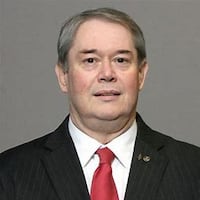Dr. Mark Frazier of Middletown, who has been flying hot air balloons since 1993, said he did not know the pilot in Texas.
“Obviously, it was a tragic event,” he said. “Power lines are probably the number one risk to hot air ballooning.”
Frazier said there are always challenges to ballooning, but those can be managed.
“Where you launch is critical to a successful flight, and being aware of changing weather conditions is important,” he said. “We’re blessed with plenty of residential developments with underground utilities.”
Frazier said pilots can make the balloon go up and down, but the pilot also needs to be cognizant of the winds and what changes may come. Even during events like the Ohio Challenge in Middletown as balloonists head to various targets, Frazier said the pilot still has to pick the right launching site.
“People look at ballooning as being romantic and relaxing,” he said. “Pilots are always looking down the flight path for changing conditions and possible landing spots. Safety is very important. We’ve been blessed that there have been no serious accidents here.”
Frazier has about 600 hours as a balloon pilot in command, which equates to about 600 flights. During his flights, he will only take two passengers up for a ride. He said he encourages the passengers in the cockpit to share any concerns they may have during the flight and to look for any possible obstacles.
“We’re all working there as a team,” he said. “The passengers are part of the flight crew.”
Greg Rolph, another area balloonist with more than 500 hours under his belt, said he did not know the pilot in Texas. He has been flying since the U.S. National Balloon Challenge came to Middletown in the early 1990s and was trained by Frazier.
While there are commercial balloons that have gondolas able to carry 16 people as the one in Texas, Rolph said those balloonists have the FAA certifications for commercial pilots. He also said those types of balloons have very rigorous inspections each year by the FAA.
“It’s very tragic,” he said.
Rolph said that area is “loaded with power lines, and we did our best to avoid those.”
“Most frequently when this happens it becomes pilot error,” he said. “Barring a mechanical failure, which is seldom the case, it may be a case of loss of focus by the pilot, who may not have been watching the weather or not observing the passengers. Things can happen quickly in an emergency.”
Rolph is not currently flying because of work injury.
“But I’d love to get back into it,” he said.
About the Author
